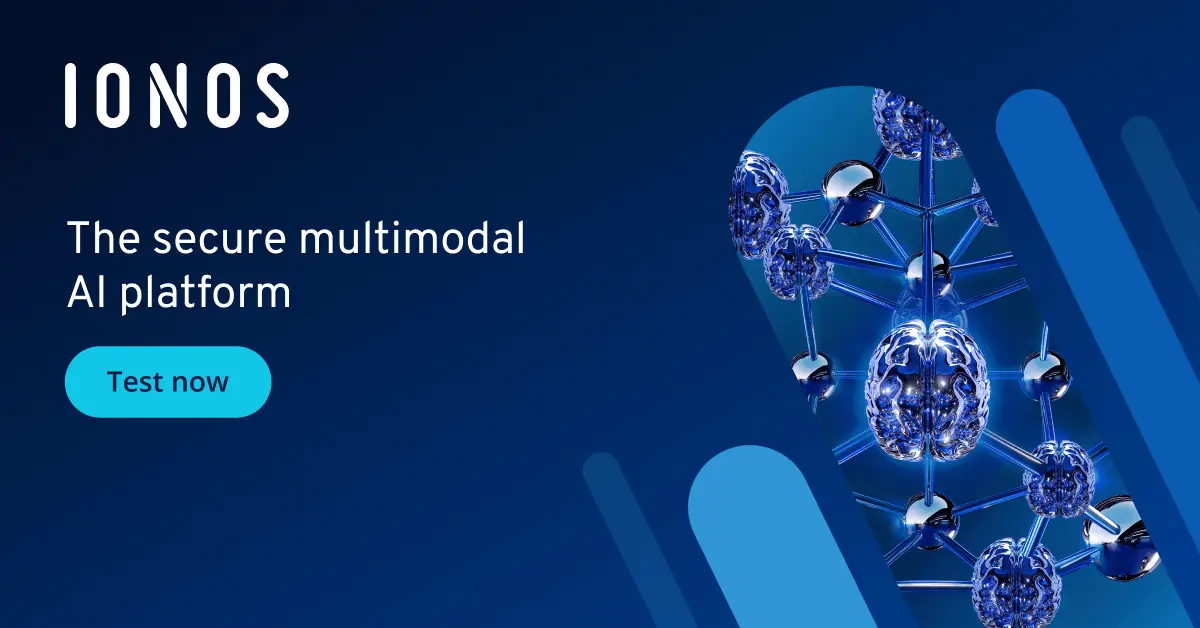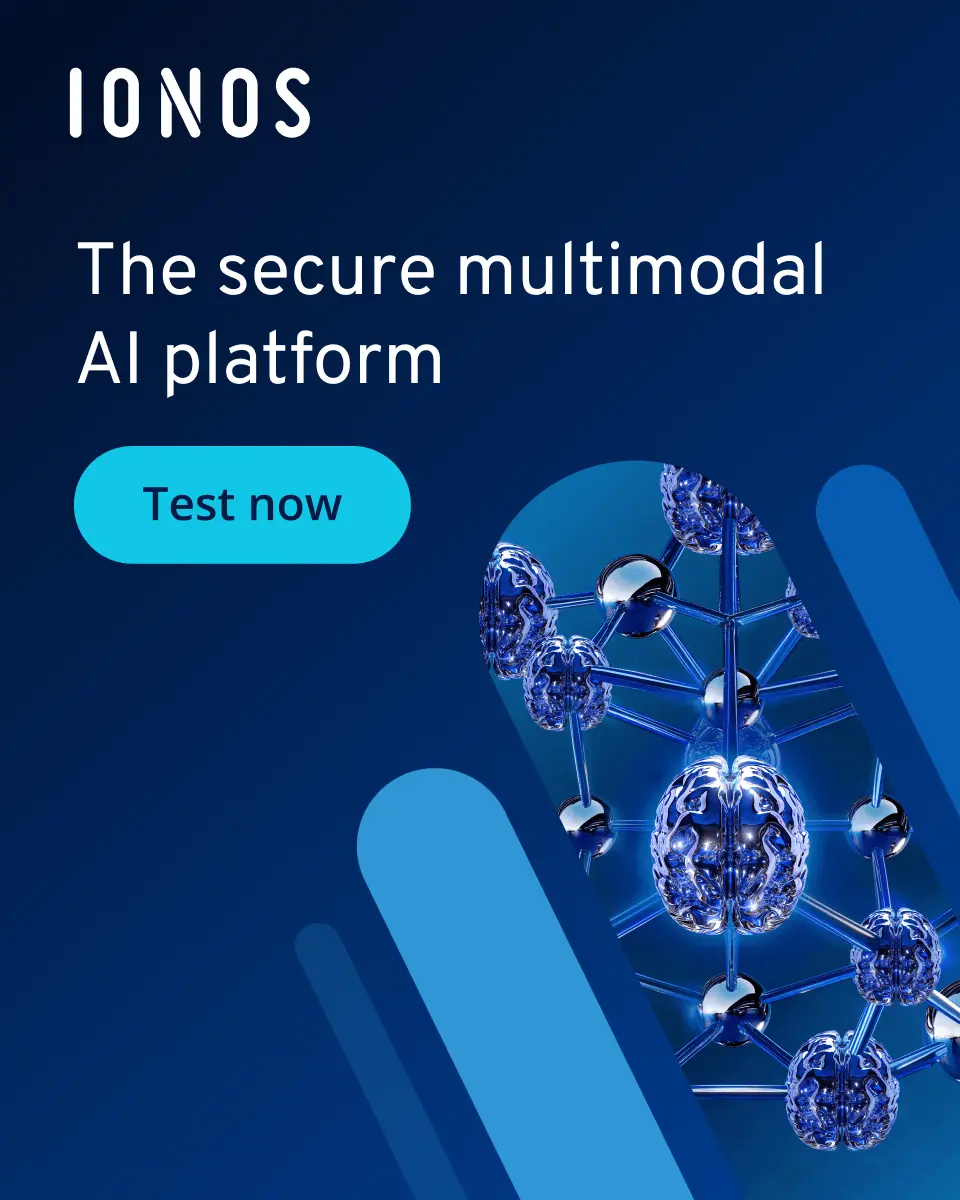What is unsupervised learning?
In unsupervised learning, an AI model is trained to discover hidden patterns, relationships and similarities using unlabelled data.
What is unsupervised machine learning?
Unsupervised learning is a data analysis method for artificial intelligence. With this approach, an artificial neural network looks for similarities among various input values. During unsupervised learning, a computer attempts to recognise patterns and structures in the input data on its own.
Unsupervised learning is the opposite of supervised learning, whereby developers maintain complete control over the whole process and clearly define the learning outcome. With this method, the training data needs to be manually labelled or categorised beforehand, which requires a significant investment of time.
- Get online faster with AI tools
- Fast-track growth with AI marketing
- Save time, maximise results
How does unsupervised learning work?
Unsupervised learning is an artificial neural network that analyses a large amount of information, and uses that information to identify connections, patterns and similarities among the data. Different techniques are utilised to carry this out. One technique that this method uses is clustering. With this technique, algorithms group data points together based on the similarities they share with each other.
For example, if a program is presented with pictures of cats and dogs, it will initially sort all of the dog pictures and cat pictures into distinct categories. However, unlike with supervised learning, the outcome is not predetermined. Unsupervised machine learning algorithms make these decisions on their own. Their decisions are based on the similarities and differences within the pictures, for example, the colour of an animal’s fur.
Another process is called association. With this approach, data is categorised based on attributes that it has in common with other data. The algorithms’ task is to identify objects that are related. They don’t have to be identical or similar though. Using the example of the dog photos from above, an unsupervised learning algorithm that is using association wouldn’t group all the dogs together but might associate leashes with dogs.
 To display this video, third-party cookies are required. You can access and change your cookie settings here.
To display this video, third-party cookies are required. You can access and change your cookie settings here. What is unsupervised learning used for?
There are many practical examples of unsupervised learning. Because it enables programs to learn game rules and strategies for winning, one way it can be used is for gains in the stock market. Forecasters can give a program the raw data of stock prices in order toidentify exchange activities and predict trends.
Artificial intelligence, and unsupervised learning in particular, are also widely used across many other sectors. Clustering makes it possible to aggregate groups of people, which is of great significance for marketing, where target groups are central to the development of advertising strategies. Marketers can use algorithms for grouping people and identifying target groups.
One sector in which unsupervised learning is securely anchored is speech recognition. Voice assistants such as Siri, Alexa and Google Assistant rely on it to work effectively. These programs learn the speech patterns of their owners, and over time, are able to understand more precise speech input, even if a device owner makes a mistake when speaking or speaks with an accent.
Many smartphones also rely on unsupervised learning to help users organise their photo galleries. Through autonomous and unsupervised learning, the device is able to recognise the same person across multiple pictures and determine similarities in location where photos were taken from the metadata. As such, pictures can be organised by location or by the people in the pictures.
Unsupervised learning is also valuable when it comes to online chatting. Many internet users have already come across chatbots, which are now used to regulate virtual conversations. Bots can also recognise insults, hate speech and racist or discriminatory comments, and either send the offensive user a warning or remove them from the chat. Automated chats work in much the same way for customer service and online ordering applications. Whether customers use a messenger app or SMS, the bots learn autonomously and sometimes even unsupervised.
Negative example of unsupervised learning: Chatbots in social media
In 2016, Microsoft was confronted with the negative effects of unsupervised learning. The company’s AI ‘Tay’ had a Twitter account and learned through its communication with other users on the platform. The program was simple at first, but quickly began to use smileys and learned how to construct entire sentences. The problem with Tay was that it did not evaluate its statements and began to make hateful statements about people from different countries and feminists, and even spread conspiracy theories – all within less than 24 hours. The program was neither racially nor politically motivated. It simply learned from people. However, it’s unclear whether some Twitter users were poking fun at the technology and purposefully fed Tay with racially and politically controversial data.
Positive example of unsupervised learning: Genetic research
In contrast, within the field of genetic research, unsupervised learning has produced very positive results. Clustering is a helpful analytical tool to analyse genetic material. Thanks to AI and its various learning methods, medical and technical fields are coming together. This has the benefit of accelerating research tremendously. It has been predicted that hereditary diseases, such as sickle cell anemia and even hereditary blindness, will be treatable and even curable in the future.
What are the advantages of unsupervised learning?
Machine learning does not only stand for technical progress, but also helps to relieve the pressures of everyday life across a wide range of sectors. It’s a huge asset to our everyday lives, to the economy and to research. In contrast to other learning methods like supervised and reinforcement learning, developers are not involved in the actual training process in unsupervised learning. In addition to saving time, this approach is also able to recognise patterns that have previously gone unnoticed. This is because unsupervised machine learning gives algorithms the ability to develop creative ideas.
How is it different to supervised and semi-supervised learning?
In addition to unsupervised learning, there’s also supervised learning and semi-supervised learning, both of which have key differences that distinguish them from unsupervised learning. We’ll briefly explore these differences below.
Unsupervised learning vs supervised learning
Unlike unsupervised learning, the input data and the corresponding outputs are known in advance in supervised learning. Supervised learning also has different goals. Since there is already a ‘correct’ answer for each data point, the aim of the supervised method is to train the AI to produce the answers that have already been established as correct.
In addition to having different goals and use cases, supervised learning and unsupervised learning also differ greatly in terms of efficiency and transparency. Unsupervised learning only needs raw data for its training and carries out pattern recognition on its own. However, the results are often very abstract when compared with supervised learning and may need to be manually analysed afterwards. In contrast, the upfront costs of supervised learning are much higher because training can only be done with data that has been labelled. The labelling of data, however, means training goals are clearly defined, and final results are generally much easier to understand.
Unsupervised learning vs semi-supervised learning
In semi-supervised learning, both labelled and unlabelled data are used for training. The program first uses the labelled data to create a basic model for classification. Using this classification model, it makes predictions for the unlabelled data. The program is then retrained using both the original labelled data and the labels that have been generated based on its predictions. This process can be repeated iteratively to refine the model.
Like supervised learning, semi-supervised learning is mainly suitable for classification problems. As such, it differs fundamentally from unsupervised learning, which is primarily used for clustering and association. However, like unsupervised learning, semi-supervised learning has relatively low upfront costs.
What other learning models are there?
In addition to the learning methods above, there’s also another learning method for AI: reinforcement learning. With this method, developers provide signals to influence the training of the algorithms, allowing the computer to learn which decisions are correct through trial and error. For each decision, the computer receives either positive or negative feedback from the training environment. This allows artificial intelligence to recognise patterns and develop strategies over time that maximise positive feedback.
For example, reinforcement learning could be used to train a robot to find an object in a room, with the object being placed in a different location each time the robot searches for it. The robot would receive negative feedback for collisions and wasted time. Over time, the robot would develop strategies to optimise its search process.

